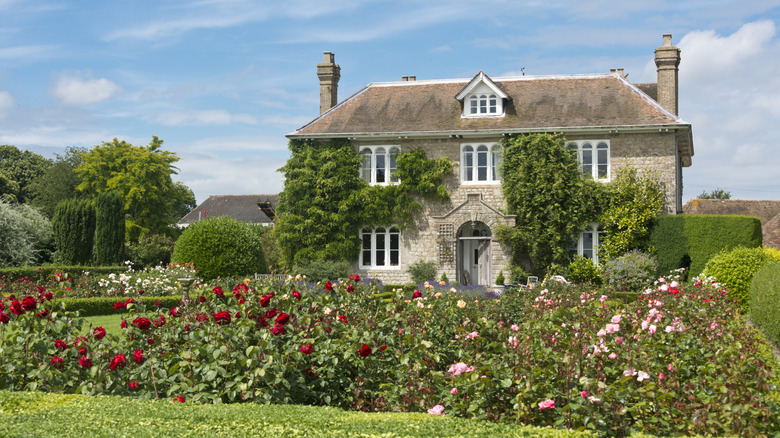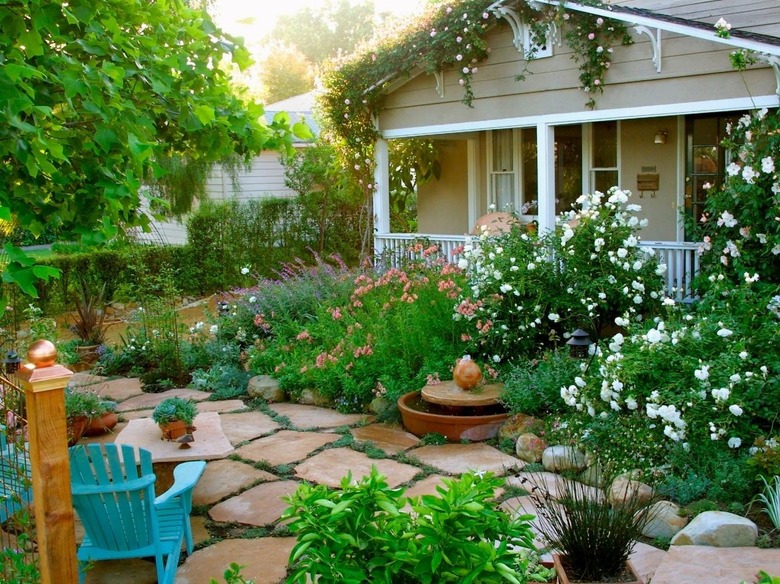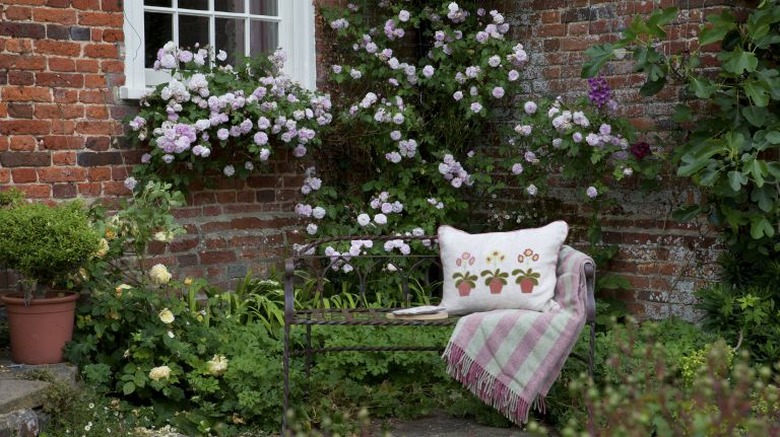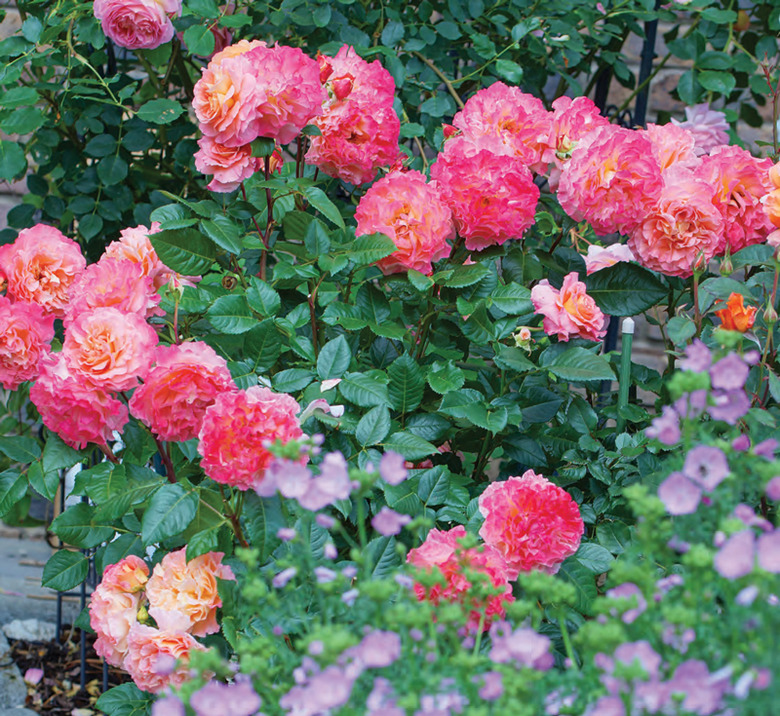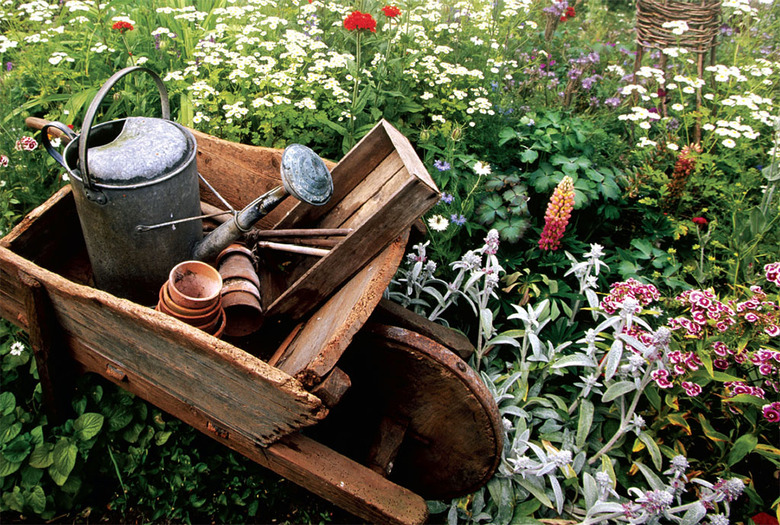Tips For Designing An English Cottage Garden
English cottage gardens are prized for their informal cozy charm and, once established, for their relative ease of maintenance. Unlike more formal garden styles, cottage gardens strive to be uncontrived and natural. There are no straight rows and few, if any, patches of blank lawn. Natural, rustic materials predominate, with equal attention given to structures—the bones of the garden—and to the selection and arrangement of plantings. The effect is alternately romantic and exuberant.
The inviting asymmetry of successful cottage gardens is rarely happenstance; careful planning is called for. As the name indicates, an English cottage garden is most at home fronting a cottage. If your home is grand, imposing and symmetrical, starkly modern and spare, or classically Mediterranean, a cottage garden would feel out of place and inauthentic. In those instances, a formal garden might be a more congenial choice. You needn't have a literal cottage, however—literal cottages being in short supply— to achieve a natural setting for your garden. As you plan your garden, look for ways to integrate garden with the dwelling, through your choice of materials, colors, and structures.
Cottage Garden Pathways
Pathways in a cottage garden are informal—meaning they are seldom straight—and paved with natural materials, such as flagstone or gravel. Grassy paths, if any, should be soft and casual and not closely cropped. While pathways serve to guide you from one place to another, providing access to the various portions of the garden, they also serve to divide the garden into distinct areas. Judiciously placed pathways, coupled with plantings and structures, can alternatively mask and reveal aspects of your garden. It may be helpful to think of your garden plan in terms of an array of experiences with areas of stimulation offset by areas of repose. The pathways in cottage gardens are typically edged with thick border plantings. If floral, these borders often carry a color theme for the sake of flow and unity. Compact border plants such as boxwood can also suitably define pathways.
Dimensionality in a Cottage Garden
Part of the charm of English cottage gardens comes from visually pleasing variations in height. This may be achieved by plant selection, by the use of garden structures, strategically placed bushes or small trees, and with raised beds. In keeping with the rustic spirit of cottage gardens, a raised bed can be built of local stone or it can simply be a raised mound. Structures might include trellises, pergolas, arches, arbors or window boxes, planted with vines or climbing roses. Such foliage-bedecked vertical features serve not only to integrate the garden with the house as the backdrop, but also to define semi-hidden intimate areas of the garden layout. Mindful selection and placement of plants, with tall varieties serving as the backdrop to lower ones—themselves silhouetted against the "cottage"—also adds to the dimensionality of your garden.
Employing Structures in an English Cottage Garden
Not only do structures lend verticality to your garden plan, but they can also contribute substantially to the character of your cottage garden. Key to this is the selection of appropriate materials. In keeping with the homespun quality that the English cottage garden seeks to present, twig-built features are highly suitable, as are fences and gates made of natural wood. Picket fences and lattice painted white or green and interposed with climbing plants can be used to good effect.
Plantings for an English Cottage Garden
A key attribute of historic cottage gardens was their utility. With only a small landholding around their houses, cottage gardeners planted vegetables and medicinal herbs in addition to flowers. Purely decorative flowers were in the minority. The classic cottage garden might also have allotted space for small livestock or beehives. In keeping with this practical aspect of English cottage gardens, it is appropriate to freely mix vegetables and herbs with the flowers. That's not to say that vegetables can't also be decorative—a border of kale or chard or a trellis of scarlet runner beans offers an appealing accompaniment to the flowers.
Old-fashioned flower varieties seem most at home in a cottage garden. As a bonus, many of the heirloom flower varieties are self-seeding and perpetuate themselves. Your final flower choice will naturally be mitigated by the growing conditions in your area. Think not only about bloom color but also about contrasts of texture, alternating areas of intensity with areas of respite. In a classic English cottage garden, the plantings are massed for impact rather than spread out.
Roses are a classic flower choice for English cottage gardens, with the preference being for fragrant old varieties and newer disease-resistant ones that emulate the old ones. Some climbing varieties require relatively little maintenance. Other plants to consider include: hollyhock, coneflower, clematis, foxglove, snapdragon, bleeding heart, calendula, Shasta daisy, sweet peas, cranesbill geranium, nepeta, yarrow, and lady's mantle.
Decorative Cottage Garden Features
In keeping with the casual and artless innocence of the cottage garden, purely decorative elements can be used to good effect. A birdbath or simple fountain, a sundial, picturesque pots that also keep invasive plants contained—anything that offers a focal point may be used to give your garden character. Don't overdo it, of course. The goal is visual relief, not clutter.
More, perhaps, than any other distinct garden style, the English cottage garden affords ample latitude to create a space that echoes its gardener's ambition and personality. When you design yours, make it a reflection of yourself—an ornament to your "cottage" and a space in which you will be glad to linger.
